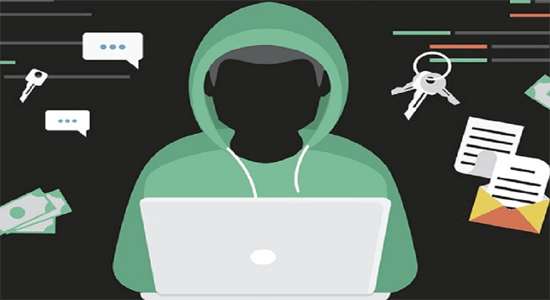
A cyber-attack is an illegal attempt to access your computer network system by cybercriminals, hackers, or digital ads to steal, alter, destroy, or expose any vital information.
Cyberattacks may target individuals, enterprises, or even governments. Usually, a hacker’s goal is to get access to a company’s valuable resources like intellectual property (IP), payment data, or even client data.
Well, understanding these threats is important for individuals and organizations to protect themselves against potential cyberattacks.
In this guide, you will come through some of the common cyber threats to be aware of.
7 Most Common Types of Cyber Attacks
1. Malware
Malware is malicious software or program code that is usually created with the intention to harm your system, network, or server. This is the most common type of cyberattack which has many subsets like ransomware, trojans, spyware, viruses, worms, keyloggers etc.
To mitigate malware attacks and encrypting your online activity on Windows, follow these instructions.
- Update your operating system regularly.
- Make use of robust antivirus and firewall systems.
- Only download files or attachments from trustworthy sources.
- Use strong passwords and multi-factor authentications.
- Monitor the suspicious activities of all your accounts.
2. Denial-of-Service (DoS) Attacks
The Denial-of-Service (DoS) attacks flood into your network with false requests to spoil and the cyber criminal can affect your business operations. After this cyberattack, you may not be able to perform your routine tasks like mail, websites, or other resources that are being operated by your system or network. Most DoS attacks do not involve data loss, but it may cost the enterprise time and money to restore business operations.
To mitigate DoS attacks, follow these instructions:
- Implement strong network security measures.
- Make use of firewalls and intrusion detection systems.
- Maintain updated software.
- To manage traffic distribution, make use of the content delivery networks (CDNs).
3. Phishing
Phishing is another common cyberattack that makes use of social engineering techniques, email, SMS, phone, or even social media. When your system is subjected to phishing, your sensitive information such as passwords, account numbers, and bank details might be stolen, or you might have downloaded a harmful file that installs the virus on your system or phone.
To prevent phishing attacks, follow these instructions:
- Beware of doubtful emails or messages.
- Do not click on suspicious links from unreliable websites.
- Deploy strong and unique passwords.
- Make use of updated antivirus tools and anti-phishing tools.
4. Spoofing
Spoofing is simply faking the original’s identity and using it for identity theft. By doing so, the hacker will target your system and access it with the aim of stealing your private data. Some examples include fake job offers, fake banking messages, money refund messages, fake phone calls demanding your banking information, etc.
To overcome and prevent spoofing, follow these instructions.
- Deploy Multi-Factor Authentication (MFA) for essential login methods.
- Use email verification systems.
5. Code Injection Attacks
This involves injecting malicious code into your system making it a more vulnerable computer or network that completely changes their course of action. This cyber-attack is usually used by hackers to exploit the application’s vulnerability allowing it to process any invalid data.
To mitigate code injection attacks, follow these instructions.
- Validate the user inputs.
- Make use of security mechanisms like Web Application Firewall (WAF), output encoding, etc.
- Sanitize user inputs.
6. Supply Chain Attacks
This is a type of cyberattack that targets any trusted third-party vendor who provides any services or software to the supply chain. These attacks inject any malicious code into your apps thus affecting the entire users of the apps. By then, the hackers might get into your digital infrastructure to access all the data and systems.
To mitigate the risks of supply chain attacks,
- Always monitor the suppliers and use secure channels for communication
- Ensure the integrity of the software
- Conduct routine security checks and audits.
7. Ransomware
Ransomware is just like malicious software which is capable of encrypting the user’s data and making it inaccessible or locking them out on their devices. After that, the attackers responsible for the Ransomware demand a payoff for decrypting or unlocking the device. And as the ransom is paid the victim will get the key to regain access to the device or the files.
However, paying the ransom is discouraged by security enforcement agencies as it will encourage criminal activities further.
Well, to protect yourself against the Ransomware attack you need to take certain important measures. Here is a look at some of the essential tasks:
- Always back up your crucial data.
- Install a reputable antivirus or antimalware tool and regularly scan your system.
- Also keep your security program, software and operating system updated.
- Use strong cybersecurity practices.
Final Words
That’s it! Among the vast range of cyber security attacks in this internet world, these 7 types of attacks are the most familiar and common ones.
It is important to understand and take the essential steps to avoid these cyber threats and their risks.
Hope you have gained some knowledge about them and how to get rid of them as well. It is estimated our guide is useful for you.
Thanks for Reading..!
Hardeep has always been a Windows lover ever since she got her hands on her first Windows XP PC. She has always been enthusiastic about technological stuff, especially Artificial Intelligence (AI) computing. Before joining PC Error Fix, she worked as a freelancer and worked on numerous technical projects.